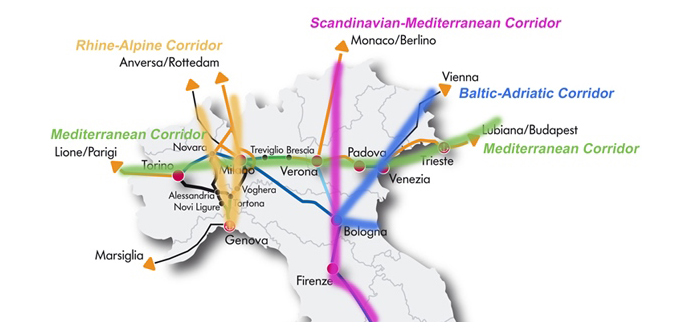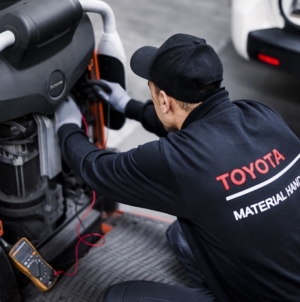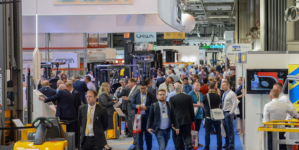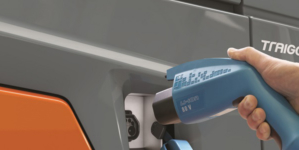-
ROSSLARE EUROPORT TARGETS HEALTH & SAFETY WITH CAMERA TELEMATICS PARTNERSHIP - 2 days ago
-
Landmark Study Reveals Wearable Robotics Significantly Boost Safety and Efficiency in Industrial Environments - July 24, 2024
-
Visku Tackle The Retail Seasonality Challenge One Pallet At A Time - July 22, 2024
-
KAMMAC AND BERGEN LOGISTICS STRENGTHEN FASHION & LIFESTYLE SERVICES IN THE UK - July 19, 2024
-
TENTBOX EXTENDS PARTNERSHIP WITH ARROWXL TO SUPPORT INCREASING DEMAND - July 17, 2024
-
The Perfume Shop improves customer journeys while driving profitability in partnership with Scurri - July 17, 2024
-
ZEROMISSION SECURES £2.3M ($3M) INVESTMENT TO ACCELERATE ELECTRIC FLEETS - July 16, 2024
-
BCMPA CELEBRATES SUCCESS OF 2024 CONFERENCE - July 15, 2024
-
Best of the Best: Jungheinrich Celebrates Triple International Award Win - July 12, 2024
-
GOPLASTICPALLETS.COM CALLS ON NEW CHANCELLOR RACHEL REEVES TO CONSIDER PLASTIC PACKAGING TAX REFORM - July 10, 2024
The important presence of the European institutions at Green Logistics Expo.
Two important international appointments at Green Logistics Expo – the joint meeting of the Baltic-Adriatic and Mediterranean Corridors and a round table with representatives of the Regional Cooperation Programmes
Europe has chosen Padua and Green Logistics Expo for a meeting of all representatives of the nodes in two of the three European Corridors in the TEN-T network (Mediterranean and Baltic-Adriatic) which pass through Veneto.
An exceptional fact for two reasons, firstly, because European Corridor meetings usually take place in Brussels, secondly because joint meetings involving more than one corridor are a rarity. A sign of the importance and interest of Green Logistics Expo for the European Community which sees Italy’s first expo uniting all logistics sectors in a single event as an important laboratory for the future economic, environmental and social organisation of goods transport both in and outside the community.
On the afternoon of Wednesday 7 March, after the official opening of the Expo and inauguration of the four portal cranes at Interporto Padova (a core node in the European TEN-T network), funded partly thanks to a contribution from the Community CEF Programme, representatives of the core nodes in the two corridors will get together in a meeting entitled “Virtuous crossroads between ports, railway terminals and urban nodes: the Adriatic-Baltic Corridor meets the Mediterranean”.
Participation is at the highest level, with the presence of corridor coordinators Laurens Jan Brinkhorst (Mediterranean) and Kurt Bodewig (Baltic-Adriatic). Alongside them will be the European Commission’s DG Move advisers, Gunter Ettl and Silke Brocks, together with Cristobal Millan De La Lastra from INEA. His presence is particularly interesting as INEA is the institution delegated by the Commission to manage CEF funds (accessible also to Interporto Padova), making this an opportunity to take stock of the situation regarding this source of financing, also of great interest for other infrastructure in Italy.
Europe will also be the protagonist on Friday 9 March during the morning of the final day of Green Logistics Expo with a round table featuring leading exponents in European Regional Cooperation, namely the programmes financing regional development projects, including in the transport field.
Not just infrastructure projects, but also international relations and connection initiatives, following the guidelines indicated by the European Union for more sustainable goods transport, with a reduction in CO2 emissions and rationalisation of energy consumption. The round table is entitled “European Regional Cooperation in support of innovative solutions for the sustainable mobility of goods and people” and will involve an exchange of views between representatives of EUSAIR (Adriatic-Ionian area) and EUSALP (Alpine area), together with the authorities responsible for managing many of the programmes involving one or more regions, from Italy-Croatia and Italy-Slovenia, to Central Europe and ADRION. All these programmes offer excellent opportunities to develop projects in collaboration with private and public partners in neighbouring regions. Under discussion will be the transversal strategic pillars represented by transport and the way in which the various programmes are supporting initiatives aimed at improving transport in the reference area (with particular focus on north-east Italy), now and in the future.

































